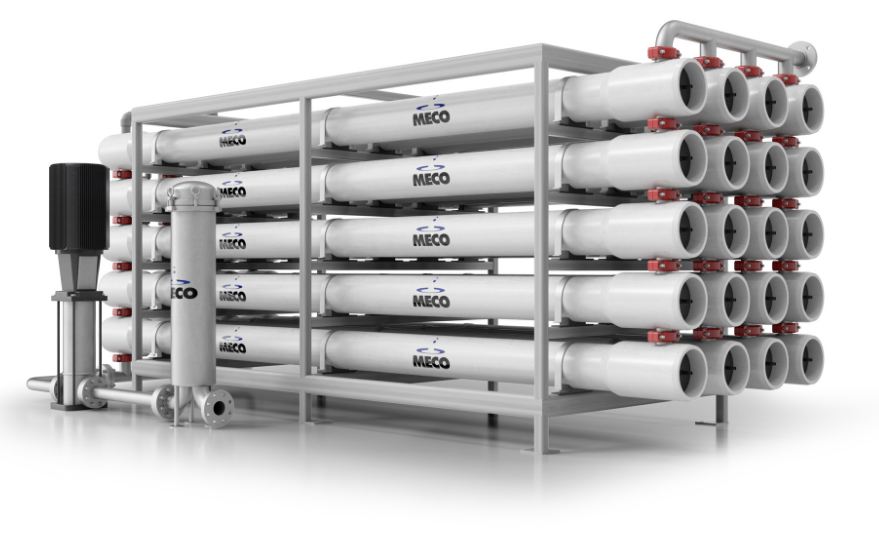Process Intensification: Transforming Chemical Engineering
Process Intensification:
Process Intensification (PI) has been defined as “a philosophy of plant design and
construction whereby a given performance is achieved in very much smaller
equipment - typically with a volume reduction of two or three orders of magnitude”
[2]. These reductions in size can come from using smaller individual pieces of
equipment or by cutting the number of unit operations or pieces of equipment used in
the process. A volume reduction of a factor of two or more (not necessarily two
orders of magnitude) was considered by [3] to be drastic enough to be labelled PI and
this work broadened the definition of PI to include a dramatic increase in production
capacity within a given volume, a significant decrease in energy consumption per ton
of product, or large decreases in waste or by-product formation.
The concept of Process Intensification (PI) was developed within ICI in the late
1970’s when Colin Ramshaw began to look into various ways of reducing the size of
parts of a plant. The desire for a reduction in size came from the realization that main
plant items only represent approximately 20% of the cost of a production system.
Items, which are essential in conventional plants, such as pipework, supporting
structures and civil engineering work contribute substantially to the cost of a plant. If
plant items are made smaller it is possible that they can be assembled more closely -
reducing the pipework costs. In addition, costs should be reduced because smaller,
lighter equipment needs less civil engineering and structural steel work. The offshore
oil industry is one area where the advantages of process intensification are relevant.
Lightness and compactness are important on rigs, which have weight and space
limits.
The field of PI was divided into two areas by [3]: equipment and methods (shown in
Figure 1) although there can be some overlap between the two areas. PI equipment
either makes one operation more efficient (in terms of size as well as energy) or
combines reaction with other operations. The combination of reaction with other
operations can be used to improve the level of control of the reaction outcome that is
possible. For example, combining reaction and heat transfer in a Heat Exchange
Reactor means that heat addition or removal can be done as needed and reaction
temperature can be controlled. PI methods are more efficient ways of processing.
They involve the combination of reaction with another operation (such as separation
of product), the combination of more than one type of separation technique, the use
of alternative energy sources (such as the use of ultrasound to supply energy needed
to drive a reaction), or fit into the miscellaneous category (such as the use of periodic
operation of reactors to improve product yield or selectivity).
It was suggested by [4] that in order to make a significant impact on the system, all
plant items must be intensified. However [5] suggested that significant improvements
in process performance can be made by adding PI equipment at strategic points in
existing processes and gave the following example. A polystyrene plant in Japan
achieved isothermal reaction conditions by adding an external loop to a stirred tank
reactor. The loop contained a series of heat exchangers with static mixers within
them. The result of the enhanced mixing and heat transfer was a 40% reduction in
energy consumption compared with the conventional process. In addition, the right
fluid environment was provided to give a product with a tighter molar-mass
distribution.
A further example was also given by [5]. Dow Corning used partial application of PI
principles and technologies to increase productivity of a process in which a key
intermediate is produced in a gas-liquid reaction (carried out in a packed column).
Poor gas dispersion was causing hot spots and by-product formation. The by-product
reduced the catalyst performance and led to shut downs every two to three weeks and
limited the productivity of the whole plant. A static mixer was introduced upstream
6
and injection arrangements were changed leading to better gas dispersion. As a
result, by-product formation was completely eliminated and productivity was
increased by 42%.
Advantages of Process Intensification :
Although [1] named the reduction of the cost of a production system as the primary
incentive for PI there are other advantages. They are:
- Improved safety
- more efficient use of raw materials
- reduced energy consumption
- improved product quality
- greater reliability
- reduced waste
- easier scale-up
- distributed plants
References:
- Gerberich, H. R., “Formaldehyde” in Encyclopaedia of Chemical Technology, volume 11, Kroschwitz, J. I., New York, John Wiley and Sons, 1994, 929 - 951.
- Ramshaw, C., “Process Intensification: a game for n players” The Chemical Engineer, volume 416, 30 – 33, 1985.
- Stankiewicz, A. I. and Moulijn J. A., “Process Intensification: Transforming Chemical Engineering”, Chemical Engineering Progress, volume 96(1), 22 – 34, 2000.
- Cross, W. T. and Ramshaw, C., “Process Intensification: Laminar Flow Heat Transfer”, Chemical Engineering Research and Design, volume 64(4), 293 – 301, 1986
- Green, A., Johnson, B. and Arwyn, J., “Process Intensification Magnifies Profits”, Chemical Engineering, volume 106(13), 66 -73, 1999.




I never comment on blogs but your article is so best that I never stop myself to say something about it. You’re amazing Man, I like it engineering <2/www.pureitpk.com/about-us->... Keep it up.
ReplyDeleteThank you for the helpful blog, "Process Intensification: Transforming Chemical Engineering." I want you to know that your information is invaluable for aspiring candidates. Keep sharing valuable updates!
ReplyDeleteChandu Biology Classes